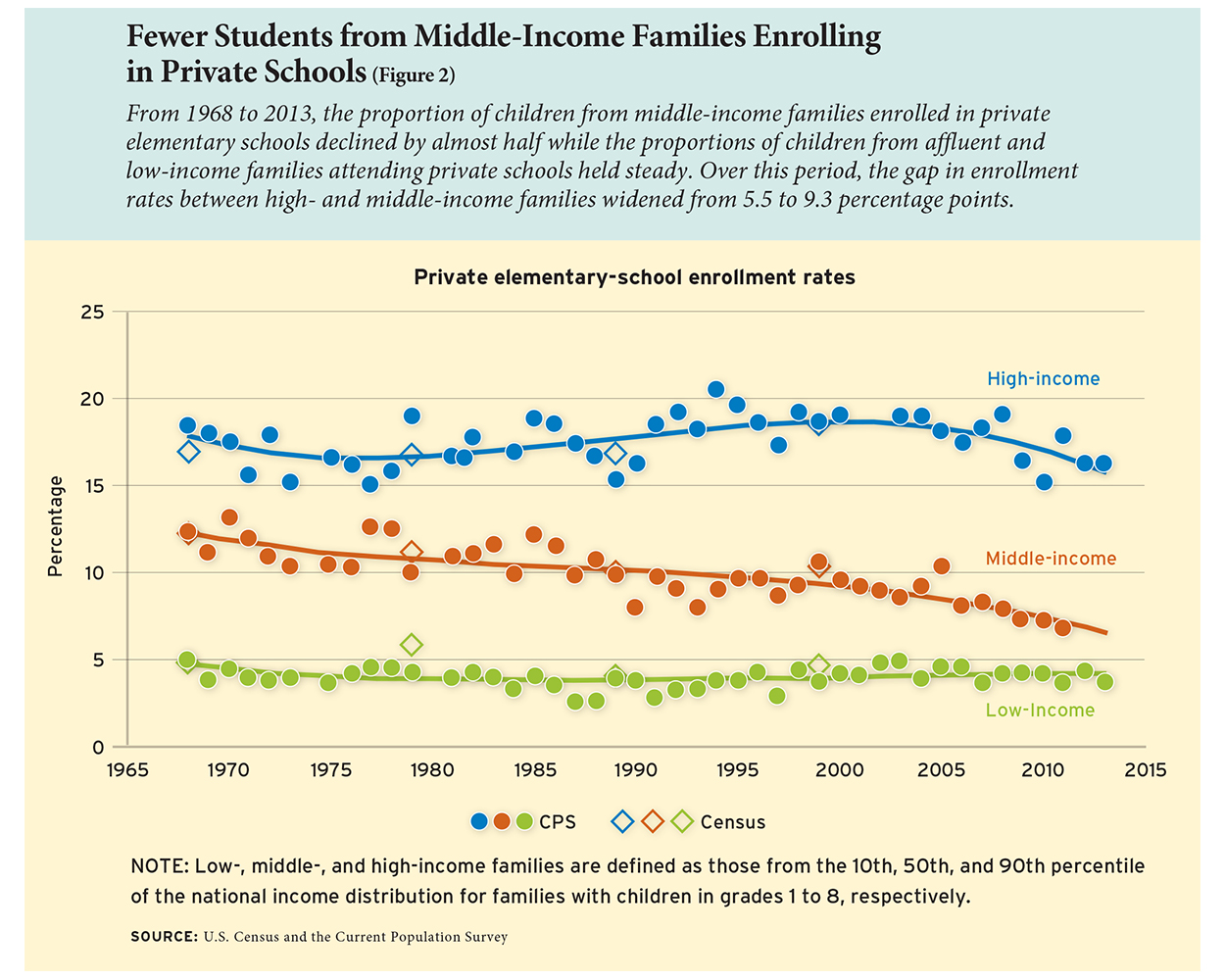New research just published by Education Next indicates that enrollment in private schools is falling among middle-income students, while high-income and low-income student enrollment in private schools is holding steady.
A closer look reveals that private school choice programs are keeping the private school sector from experiencing an even wider low- and high-income enrollment gap. The precipitous decline in private school enrollment among middle-income students makes the case for expanding choice programs to working class families.
The researchers, including Richard Murnane of Harvard and Sean Reardon of Stanford, studied private school enrollment trends between 1968 and 2013. They estimate the proportion of students enrolled… at the 10th, 50th, and 90th percentiles of the income distribution, which they refer to as low-, middle-, and high-income.
Much of the analysis and subsequent media commentary has focused on the growing private school enrollment gap between families at the 90th and 50th percentiles of income (high-income and middle-income, respectively). Between 1968 and 2013, the percentage of high-income families enrolled in private schools fell from 18 percent to 16 percent, while middle-income participation fell from 12 percent to 7 percent (see figure below).
What has perhaps been overlooked is that low-income enrollment has remained steady – in large part because of school choice programs. While the percentage of low-income families participating in private schooling is still shamefully low – around 5 percent – their enrollment has remained steady during a period in which middle-income participation has been cut nearly in half.
One might wonder how many of these low-income students are taking advantage of school choice programs to attend private schools. According to the Digest of Education Statistics, there were nearly 5.4 million students educated in private schools in the fall of 2013. In that year, more than 300,000 students were enrolled in a private school thanks to a choice program. After excluding programs that are limited to students with special needs (many of whom may also be low-income) and higher income students enrolled in programs with no means test, this leaves approximately 250,000 low-income students in a private school thanks to a school choice program in 2013.
That means nearly 5 percent of private school enrollment in 2013 was made up of low-income students who received a school choice scholarship. This is worth celebrating, and certainly contributed to the sector not experiencing an even wider low- and high-income enrollment gap.
Given the data revealed in this analysis, it is clear that the middle class needs school choice too.
The school choice movement is constantly debating whether to extend choices beyond low-income students. While it’s certainly true that school choice should be used to assist the poor, the evidence in this analysis shows that the middle class also lacks equal access to private schools and would benefit from choice programs. As Alia Wong writes in The Atlantic:
This trend isn’t just a source of concern for the Catholic community. It’s also troubling to those worried about growing inequality and income segregation in the education system as a whole. As the new Education Next report concludes, the demise of Catholic education correlates with a decline in the share of middle-class students attending independent schools.
A simple solution? Grant the middle class access to the same school choice programs that allow hundreds of thousands of low-income students access to private schooling each year. This access has prevented a decline in low-income enrollment in private schools during a time in which middle-class participation has been cut nearly in half. This is expansion of eligibility should happen simultaneously with an expansion in funding to ensure that low- and middle-class families are not fighting for the same scholarships. That means lifting tax-credit contribution caps, appropriating more funds, and lifting enrollment caps to serve more students.
If we truly care about creating conditions where all students are granted access to equal educational experiences, this should be a no-brainer for policymakers.
— Adam Peshek
Adam Peshek is Managing Director of Opportunity Policy at ExcelinEd.



